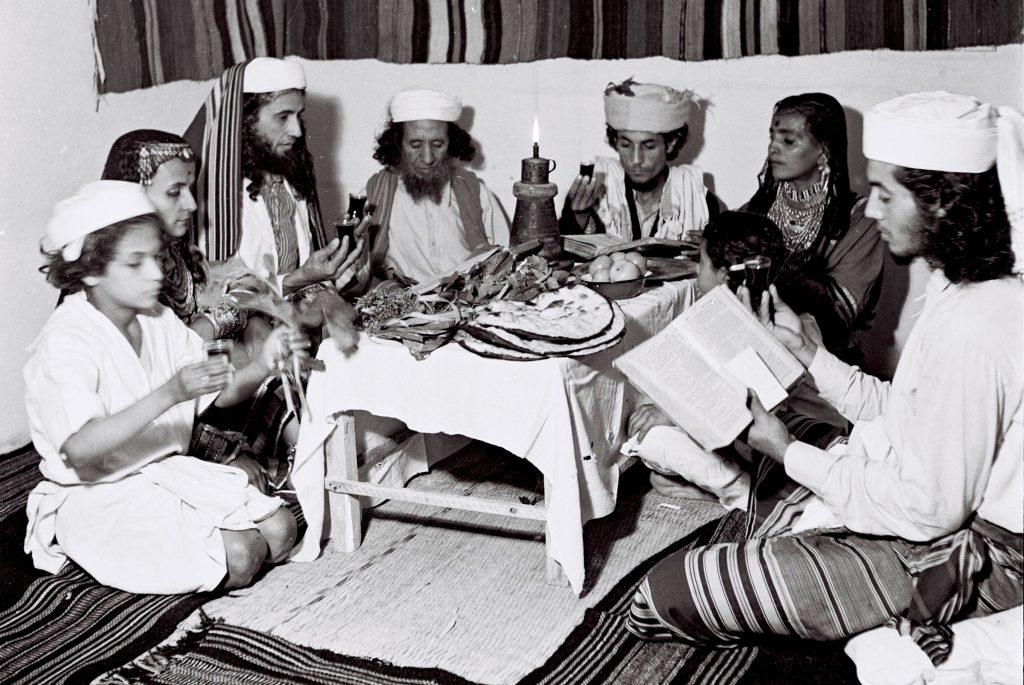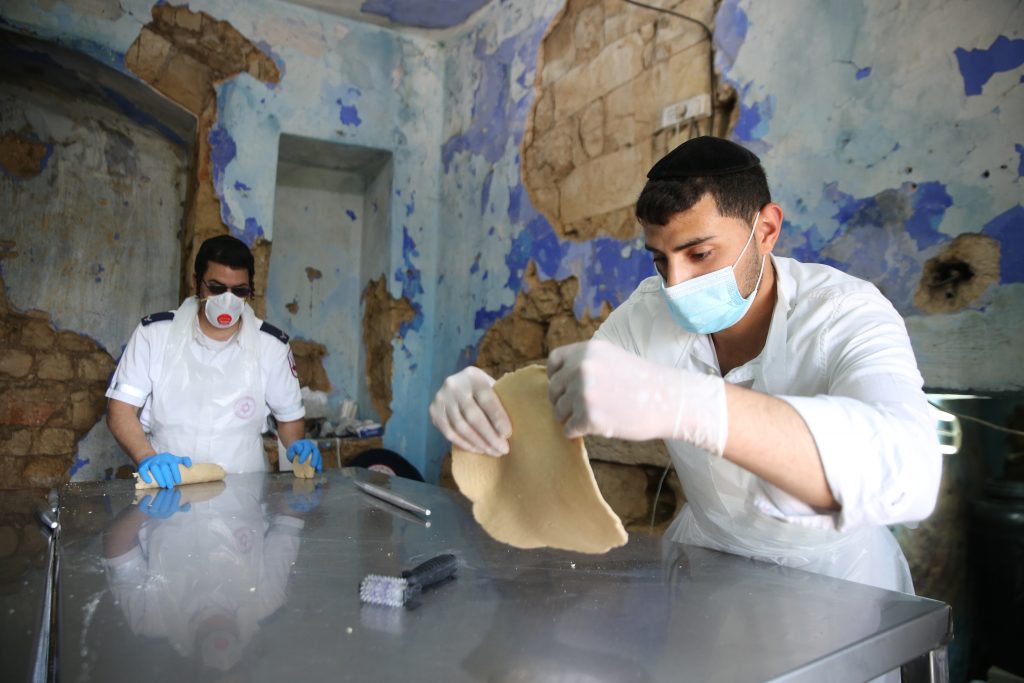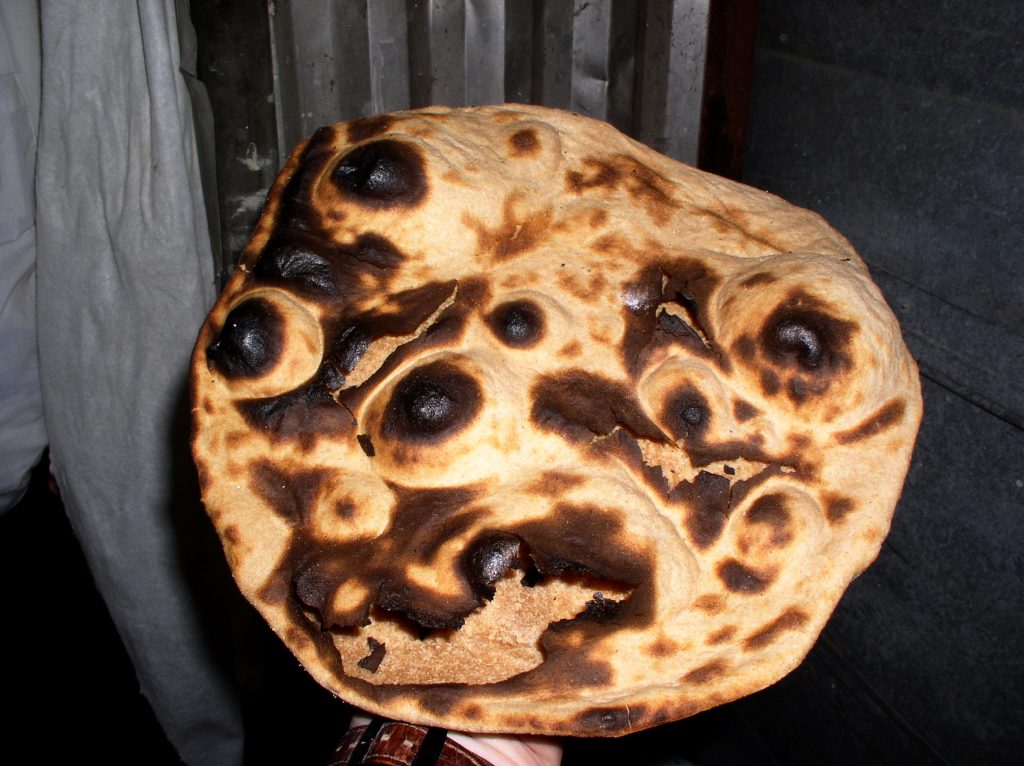Hard Truths about Soft Matzah
What could possibly be new about matzah? Halachah lays out the recipe—flour, water and nothing else. No room for chocolate chips, chipotle or even pumpkin spice, and yet over the past few years a different kind of matzah has been turning up in the freezer section of kosher supermarkets: soft matzah. While such matzah is most certainly not new—it has old roots and continues to exist is some parts of the Sephardic world—in recent years it has become more commercially available.
Contemporary soft matzot are factory baked, wrapped in plastic and stored in the freezer. (These matzot must be defrosted immediately before being served.) But are they authentic matzot? To Ashkenazim, they look suspiciously similar to chametz flatbreads, such as laffa or pita.
Interestingly, these “new” soft matzot may be truer to tradition than their hard, more cracker-like brothers. Scholars claim that soft matzah was the “bread of affliction” eaten in Talmudic times and probably earlier. “There’s lots of textual proof that matzah in Talmudic times was softer and thicker,” says Rabbi Dr. Ari Z. Zivotofsky, a Jewish Action columnist who has co-authored several scholarly articles on this subject.1 “Back then the matzot looked like pitot.” Supporting this claim, he cites a Talmudic discussion about confusing chametz and matzah. OU Rabbinic Coordinator Rabbi Avrohom Juravel also notes that the Shulchan Aruch refers to a matzah that is a “tefach thick,” which is about three or four inches thick.
For Sephardim who use soft matzot for the Sedarim, there are certain advantages. Gone is the agony of rummaging through the box of shemurah matzah to hunt down three shleimim, unbroken matzot. Almost by definition, all soft matzot are shaleim, or whole; their softness obviates the possibility of breaking.
Soft matzot also make quick work of eating shiurim, the halachically mandated measurements that one must consume to perform the mitzvah of achilat matzah. While one might need as many as two-and-a-half pieces of handmade shemurah matzah to fulfill the Seder night requirements, one soft matzah might contain five or more kezayit measurements. “No need to stuff yourself,” says Rabbi Yosef Korkos of Boca Raton’s Maor David Sephardic Synagogue, which boasts the only matzah bakery in South Florida. The bakery produces Ashkenazic and Sephardic matzot. “Best of all,” he adds, “with soft matzah one may be able to eat korech, the famous Hillel matzah-and-maror sandwich, as a wrap, which was the way some posekim believe it is meant to be eaten.”2
Another benefit is that soft matzot are indisputably deserving of the Hamotzi blessing. As for hard cracker matzot (known in halachic parlance as rekikim), some Sephardic posekim, including Rabbi Ovadiah Yosef, maintain that they get the berachah of Mezonot. And not only Sephardic posekim maintain this position. The Tzitz Eliezer, Rabbi Eliezer Waldenberg, a well-respected twentieth-century Ashkenazi posek, debated whether Hamotzi should be recited over hard matzot, ultimately justifying the berachah on the grounds that the matzah forms the basis of the meal.3 (The debate over the blessing on matzah is relevant year round, not just on Pesach.)
How do soft matzot achieve their soft texture? It’s all about the water. “Generally speaking, the less water, the harder and drier the matzah will be,” states Rabbi Avraham Manning in an online article.4 Rabbi Manning teaches in many educational institutions including the OU’s Seymour J. Abrams Jerusalem World Center. Soft matzah bakers routinely add more than twice the amount of water used in hard matzot, making the dough pliable, he explains. While the preparation of hard shemurah matzot requires skilled workers for rolling, riddling and placing the matzah in the oven, some of whom charge as much as $1,000 a day, soft matzot can be easier to knead and roll, although making them also requires a unique skill set.
At the Avoteinu bakery in Ashdod, Israel—the industry leader in soft matzah baking—the Yemenite hole-less soft matzot are formed inside a hot oven. “We have no tables or rolling pins. Just a bowl for hand-kneaded dough,” says Rabbi Shmuel Gerafy, CEO of the bakery. “Because the oven is hot (up to 842° F) our workers must move quickly or they’ll be burned.” It is still far lower than the oven heat used to bake Ashkenazi shemurah matzot, which can go up to 1300° F.
“This is cheaper and simpler,” says Rabbi Korkos. The difference is reflected in the price. Soft matzot generally sell for $30 a pound, while handmade Ashkenazi shemurah matzah can cost more. “You can get away with one matzah per person [to fulfill the mitzvah], as opposed to two-and-a-half pieces of hand shemurah,” says Rabbi Eli David, who sells soft matzah.
So is soft matzah really new? Well, yes and no. In earlier centuries, matzot were usually baked at home in both the Sephardi and Ashkenazi world, often during Pesach. Furthermore, as stated previously, it seems that the matzot back then were thicker than the ones we use today. Already hundreds of years ago, due to urbanization and other factors, matzah began to be produced well in advance of the holiday. Because of the long storage period, matzot were made thinner and drier so they would last. At the same time, some posekim also encouraged a thinner product fearing that thicker matzot might contain unbaked dough, which could turn to chametz.5 This is a serious halachic concern. “The thicker the matzah, the more likely the dough inside is not baked well,” explains Rabbi Juravel. “If water intermingles with the unbaked flour, the matzah becomes pure chametz.” Therefore, most Ashkenazic posekim are opposed to Ashkenazim consuming soft matzah on Pesach. “The only ones who can eat soft matzah are those Sephardim who have a mesorah on how to make it properly without it becoming chametz,” says Rabbi Juravel.
Generally speaking, Yemenite soft matzot don’t have holes. Rabbis Korkos punches holes into the soft matzot to prevent them from puffing up as that is a sign it may be becoming chametz. Rabbi Gerafy uses specially trained workers who form the soft matzot inside the oven and watch very closely to make sure they don’t puff up.
Yemenite Jews were among a small group of outlier communities where Jews continued baking matzot at home and during the holiday. This wasn’t always easy. Yom Tov Tzemah, a representative from the Alliance Israelite Universelle (a Paris-based international Jewish organization that protects the rights of Jews around the world), who visited Yemen in 1920, noted that while the soft matzot the Yemenites baked during the holiday were far tastier than the Ashkenazi cracker variety, the twice daily baking schedule was grueling for the bakers—most of them female. “What is the life of the women here, if not sadness and work?” he wrote.6

A Yemenite family celebrating the Pesach Seder at their new home in Tel Aviv in 1946. Photo: Zoltan Kluger/Israel Government Press Office
Is there a solution? Better flavor and less work? At the start of the twenty-first century, a new generation of Sephardic Jews started using refrigeration to revive the soft matzah tradition, while at the same time allowing the bakers to enjoy the holiday. They looked to the old-time home bakers. Rabbi Gerafy grew up with the tradition and learned how to bake soft matzah from his great-grandmother. And yet he and his family don’t bake during the holiday. At the Avoteinu bakery, baking starts around Chanukah, at the same time the Ashkenazi shemurah matzah factories start their work. Instead of wrapping the matzot in the familiar brown sheets of butcher paper, soft matzot are inserted into sealed plastic bags and then shrink-wrapped boxes, which are stored in freezers. In the US, soft matzah bakeries start production in Adar.
All of those mentioned in this article who are involved in baking soft matzah have seen increased demand among Sephardi consumers. “Everybody likes them,” says Rabbi Korkos. “Last year was the first time we sold our matzot in stores. We sold 450 boxes, but we could have easily sold twice as many.” Rabbi David ships out thousands of pounds each year via Federal Express. “Interest increases from year to year,” says Rabbi Gerafy. When he began fifteen years ago, his annual sales hovered around 800 pounds. “Now we sell fifteen tons a year.”
The OU does not certify any soft matzah bakeries. “Former OU Kosher posek Rav Yisroel Belsky, zt”l, would not permit the OU to certify soft matzah,” explains OU Rabbinic Coordinator Rabbi Eli Gersten. “Although strictly speaking there is no halachah that forbids this, and there are Sephardim who have a tradition on how to bake them, the minhag of Ashkenazim is not to eat soft matzot.” Rabbanim also warn against home baking experiments—especially during Pesach. “It’s too easy to make a mistake and end up with actual chametz,” says Rabbi Gersten.
For those who are halachically permitted to consume them on Pesach, soft matzot are a tasty alternative to classic matzah boards. What about the rest of us? Enjoy them during the rest of the year—with or without chocolate chips.
Notes
1. See, for example, Rabbi Dr. Ari Z. Zivotofsky and Dr. Ari Greenspan, “The Halachic Acceptability of Soft Matzah,” Journal of Halacha and Contemporary Society (spring 2014), p. 108.
2. Not everyone agrees. According to some rabbis, korech is derived from the word “krach,” which means a walled city, implying a hard matzah covering the maror. See Rabbi Dr. Ari Z. Zivotofsky and Dr. Ari Greenspan, “The Thick and Thin of the History of Matzah,” Hakirah: The Flatbush Journal of Jewish Law and Thought 17 (spring 2014).
3. Rabbi Dr. Ari Z. Zivotofsky and Dr. Ari Greenspan, “The Halachic Acceptability of Soft Matzah,” Journal of Halacha and Contemporary Society, p. 116.
4. See Rabbi Avraham Manning, “Halachic and Hashkafic Issues in Contemporary Society,” https://www.ou.org/holidays/files/Halachic-and-Hashkafic-Issues-in-Contemporary-Society-OU-Israel-Center-Shiur-209-Soft-Matza.pdf.
5. Ibid.
6. Zivotofsky and Greenspan, “The Thick and Thin,” p. 121
Editor’s Note: Baking matzah (soft or hard) for Pesach use is a serious business. The resulting product will either be kosher for Passover matzah or it will be chametz (there is no middle ground). Consuming chametz on Pesach carries a prohibition of karet. Thus, unless one is an expert in the details of these halachot, it is best not to try it on one’s own.
Carol Green Ungar is an award-winning writer whose essays have appeared in Tablet, the Jerusalem Post, Ami Magazine, Jewish Action and other publications. She teaches memoir writing and is the author of several children’s books. Special thanks to Rabbi Dr. Ari Z. Zivotofsky, who helped with the preparation of this article.
A Clarification on the OU’s Position on Soft Matzah


